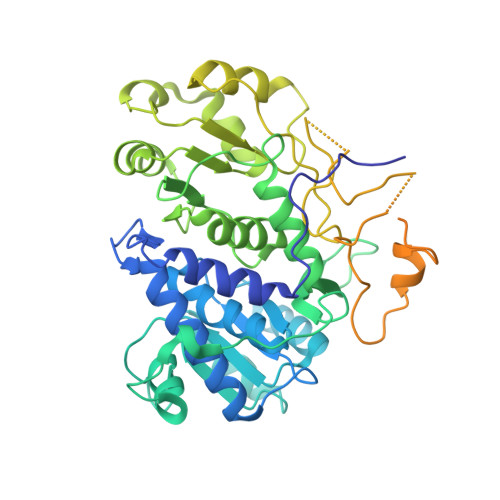Beetle luciferases with naturally red- and blue-shifted emission.
Carrasco-Lopez, C., Ferreira, J.C., Lui, N.M., Schramm, S., Berraud-Pache, R., Navizet, I., Panjikar, S., Naumov, P., Rabeh, W.M.(2018) Life Sci Alliance 1: e201800072-e201800072
- PubMed: 30456363
- DOI: https://doi.org/10.26508/lsa.201800072
- Primary Citation of Related Structures:
6AAA, 6ABH, 6AC3 - PubMed Abstract:
The different colors of light emitted by bioluminescent beetles that use an identical substrate and chemiexcitation reaction sequence to generate light remain a challenging and controversial mechanistic conundrum. The crystal structures of two beetle luciferases with red- and blue-shifted light relative to the green yellow light of the common firefly species provide direct insight into the molecular origin of the bioluminescence color. The structure of a blue-shifted green-emitting luciferase from the firefly Amydetes vivianii is monomeric with a structural fold similar to the previously reported firefly luciferases. The only known naturally red-emitting luciferase from the glow-worm Phrixothrix hirtus exists as tetramers and octamers. Structural and computational analyses reveal varying aperture between the two domains enclosing the active site. Mutagenesis analysis identified two conserved loops that contribute to the color of the emitted light. These results are expected to advance comparative computational studies into the conformational landscape of the luciferase reaction sequence.
- New York University Abu Dhabi, Abu Dhabi, United Arab Emirates.
Organizational Affiliation:
















